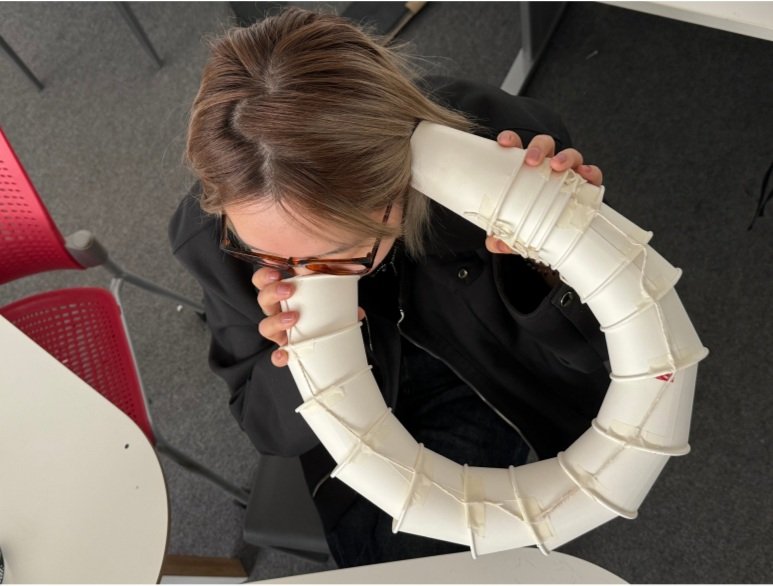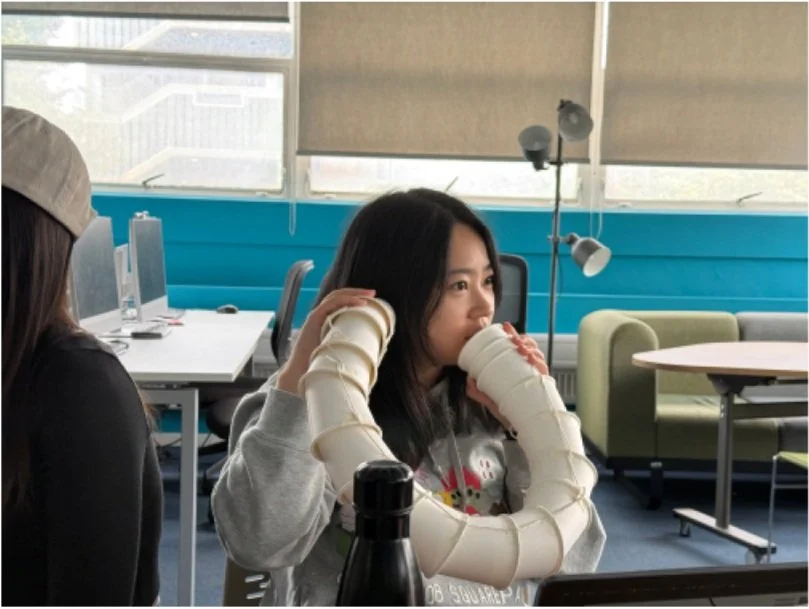brain
scapes
Group: Dahoon, Jin, Jiayi, Ellen
Week Two
Exploring, exploding, exploiting process, criticality and interaction in relation to user experience design.
Design a way to make brain activity responding to aesthetic experiences visible, tangible, or interactive.
Neuroaesthetic
Partnership: Kinda Studios
dirECtion.
Building on our previous research, we got keywords, vital signs, and sensense. We decided to focus on amplifying everyday physiological signals to create meaningful and aesthetic experiences. By exploring subtle, embodied responses—such as breath, posture, and gaze—as low-tech indicators of engagement, we aim to translate internal states into tangible, interactive expressions that make experiences more perceptible.
1st testing
ideation
design
the breathing tool
Testing
Breath is one of the most accessible vital signs, so we wanted to design a test to explore how it can be perceived through different senses, such as hearing, and whether experiencing breath in this way can be an aesthetic experience.
Directed Storytelling + Body Mapping
We began by introducing our device and explaining the purpose of the experience. Participants were guided to focus on their breath for a few minutes, encouraging them to notice how it felt and whether it influenced their mood or emotional state. Afterward, we asked reflective questions about their experience—such as how their breathing made them feel and whether it evoked any specific images or associations. Finally, participants were invited to visually express their bodily sensations through drawing, representing elements like energy flow, air movement, or any other perceptions they experienced.
insights
Based on Lehrer & Gevirtz (2014) and Khalsa & Lane (2009), which highlight how conscious breath regulation can enhance parasympathetic activity and emotional calm, we conducted user testing with our breath-focused device. Most participants reported feelings of support, relaxation, and increased awareness of internal sensations.
2nd testing
ideation
testing
Heartbeat, both through sound and touch, is a profoundly powerful and emotional experience. Even a regular heart rate can evoke a deep sense of impact and intimacy. We aimed to express the preciousness and intensity of a beating heart through the visual and tactile resonance of water ripples. Using a speaker and a basin, we created a setup that transforms the heartbeat into a tangible, immersive sensory experience.
insights
Through testing, we discovered that the approach was not feasible. Whether using sound from a phone or an external speaker, the audio was not strong enough to produce the intense water ripples we envisioned. The vibrations were barely visible, even after switching to a metal container in hopes of enhancing the effect. Unfortunately, the setup still failed to convey the powerful impact of a heartbeat.
Reflection & next step
This week we began prototyping to explore how bodily signals can be externally represented and amplified through devices. Our first test was promising, so we plan to involve more participants and expand our set of questions to guide future development. Simultaneously, we’ll continue testing different materials and structures to better amplify these vital signs and craft a meaningful aesthetic experience.


















